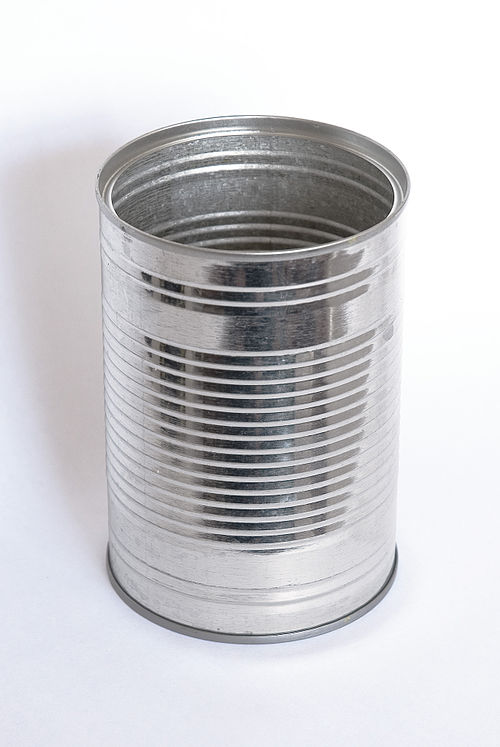Canisternoun
A cylindrical or rectangular container usually of lightweight metal, plastic, or laminated pasteboard used for holding a dry product (as tea, crackers, flour, matches).
Canisternoun
Any of various cylindrical metal receptacles usually with a removable close-fitting top.
Canisternoun
A special short range antipersonnel projectile consisting of a casing of light metal, loaded with preformed submissiles such as flechettes or steel balls. The casing is designed to open just beyond the muzzle of the weapon, dispersing the submissiles.
Canisternoun
A component of canister type protective mask containing a mechanical filter and chemical filling to filter, neutralize and/or absorb toxic chemical, biological and radiological agents.
Canisternoun
A projectile component containing colored or screening smoke or riot control agent composition.
Canisterverb
(transitive) To pack into a canister.
Canisternoun
A small basket of rushes, reeds, or willow twigs, etc.
Canisternoun
A small box or case for holding tea, coffee, etc.
Canisternoun
A kind of case shot for cannon, in which a number of lead or iron balls in layers are inclosed in a case fitting the gun; - called also canister shot.
Canisternoun
a metallic cylinder packed with shot and used as ammunition in a firearm
Canisternoun
metal container for storing dry foods such as tea or flour
Canisternoun
a round or cylindrical container used for storing such things as food, chemicals, or rolls of film.
Canisternoun
a cylinder of pressurized gas, typically one that explodes when thrown or fired from a gun
Canisternoun
small bullets packed in cases that fit the bore of a gun
Cylindernoun
(geometry) A surface created by projecting a closed two-dimensional curve along an axis intersecting the plane of the curve.
Cylindernoun
(geometry) A solid figure bounded by a cylinder and two parallel planes intersecting the cylinder.
Cylindernoun
Any object in the form of a circular cylinder.
Cylindernoun
A cylindrical cavity or chamber in a mechanism, such as the counterpart to a piston found in a piston-driven engine.
Cylindernoun
(automotive) The space in which a piston travels inside a reciprocating engine or pump.
Cylindernoun
A container in the form of a cylinder with rounded ends for storing pressurized gas; a gas cylinder.
Cylindernoun
An early form of phonograph recording, made on a wax cylinder.
Cylindernoun
The part of a revolver that contains chambers for the cartridges.
Cylindernoun
(computing) The corresponding tracks on a vertical arrangement of disks in a disk drive considered as a unit of data capacity.
Cylinderverb
(transitive) To calender; to press (paper, etc.) between rollers to make it glossy.
Cylindernoun
A solid body which may be generated by the rotation of a parallelogram round one its sides; or a body of rollerlike form, of which the longitudinal section is oblong, and the cross section is circular.
Cylindernoun
Any hollow body of cylindrical form
Cylindernoun
The revolving square prism carrying the cards in a Jacquard loom.
Cylindernoun
a cylindrical container for oxygen or compressed air
Cylindernoun
a solid bounded by a cylindrical surface and two parallel planes (the bases)
Cylindernoun
a surface generated by rotating a parallel line around a fixed line
Cylindernoun
a chamber within which piston moves
Cylindernoun
a solid geometrical figure with straight parallel sides and a circular or oval cross section.
Cylindernoun
a solid or hollow body, object, or part having the shape of a cylinder.
Cylindernoun
a piston chamber in a steam or internal combustion engine.
Cylindernoun
a cylinder-shaped container holding liquefied gas under pressure.
Cylindernoun
a rotating metal roller in a printing press.
Cylindernoun
a cylinder seal.
Cylinder
A cylinder (from Greek: κύλινδρος, romanized: kulindros, lit. 'roller', 'tumbler') has traditionally been a three-dimensional solid, one of the most basic of curvilinear geometric shapes. It is the idealized version of a solid physical tin can having lids on top and bottom.






